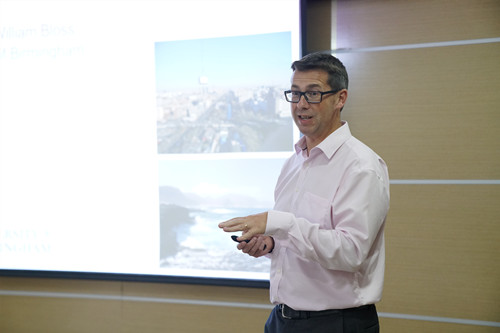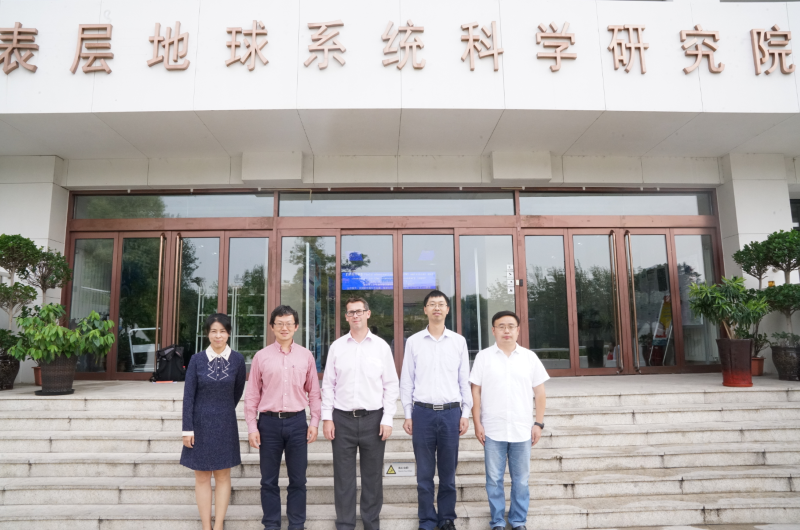On the invitation of Institute of Surface-Earth System Science (ISESS, TJU), Prof. William Bloss from the University of Birmingham visited ISESS on the afternoon of September 20, and gave an academic report entitled “Field observations of HONO emissions and chemistry in the atmospheric boundary layer”.

After introducing the University of Birmingham and School of Geography, Earth and Environmental Sciences, Prof. William Bloss started his talk from the source of HONO. Nitrous acid, HONO, is a relatively poorly understood atmospheric compound, but which it has recently been recognized can be the dominant source of OH, and a significant contributor to NOx, in the atmospheric boundary layer. Recent data suggest that surfaces, vehicle emissions and aerosol particles can be HONO sources. He presents field data from a solar eclipse in the UK, from the tropical Atlantic boundary layer, and from the air above Beijing, which are used to constrain sources of HONO to the atmosphere, and to test recently proposed SO2 oxidation mechanisms in haze formation.
Professor William Bloss obtained his BA in Natural Sciences (Chemistry) and PhD in Atmospheric Chemistry from the University of Cambridge. His PhD research concerned laboratory studies of atmospheric chemical kinetics. In 1999 he took up a position as a Postdoctoral Scholar at the California Institute of Technology, based at the NASA Jet Propulsion Laboratory, studying the chlorine oxide reactions responsible for polar ozone hole formation. In 2001 he moved to the School of Chemistry at the University of Leeds, working initially as a Research Fellow and subsequently as a lecturer in Physical Chemistry, where his research involved field measurements of tropospheric radical species. He joined the University of Birmingham in 2007, where his research concerns atmospheric chemistry and air pollution, studied through a combination of field measurements and laboratory studies. He is currently Professor of Atmospheric Sciences, and Head of the School of Geography, Earth and Environmental Sciences.
